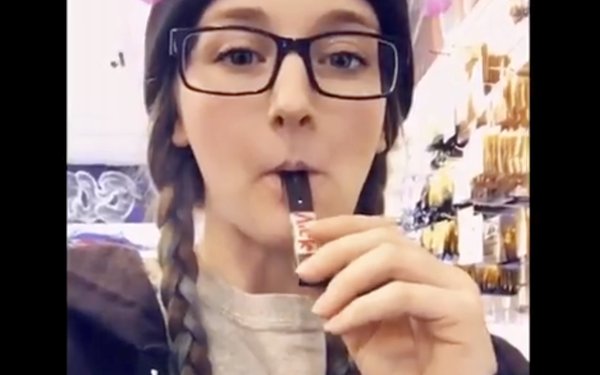packaged goods
Researchers Miss Influence Of Social Media On 'Juuling,' Study Says
- by P.J. Bednarski @pjbtweet, June 5, 2018

The popularity of Juul electronic cigarettes grew rapidly after its manufacturer shifted its budget away from traditional ad spending and ramped up its use of social media, says a new academic study led by researchers at the Georgia State University’s School of Public Health.
And that growth happened largely while no one was noticing because surveys and other ways of checking vaping growth weren’t looking hard enough at sources like Twitter, Instagram, YouTube or other social media outlets.
Now, it’s estimated Juul has a more than 50% share of the e-cigarette market, and its delivery of nicotine worries health officials, so much so that in April the U.S. Food and Drug Administration beefed up enforcement of banning sales to minors. According to Reuters, each one of the Juul disposable pods contains liquid with 5% nicotine and delivers the equivalent of of one pack of conventional cigarettes.
advertisement
advertisement
For many young smokers, “juuling” is as cool as smoking cigarettes was to other generations, but now they can share their experiences with everyone, as Juul has learned.
The lead author of the report is Dr. Jidong Huang, associate professor of health management and policy at Georgia State. One of his conclusions is that “the discrepancies between e-cigarette sales data and the prevalence of e-cigarette use from surveys highlight the challenges in tracking and understanding the use of new and emerging tobacco products. In a rapidly changing media environment, where successful and influential marketing campaigns can be conducted on social media at little cost, marketing expenditures alone may not fully capture the influence, reach and engagement of tobacco marketing.”
The study shows that on Twitter, for example, there were just 8,416 Juul-related tweets from users and others in 2015. As Juul’s strategy apparently changed, that went up to 21,292 captured tweets the next year. But by 2017, the tweets increased to 366,786. “The growth trend in Juul tweets noticeably tracks well the growth in Juul retail sales; the two data series were highly correlated,” the report says.
The research also says the “official” Juul Twitter account has had 4,800 entries through early into 2018, the vast majority created since June 2017.
The study is titled “Vaping versus Juuling: how the extraordinary growth and marketing of Juul transformed the U.S. retail e-cigarette market.” The authors admit it has some deficiencies. It didn’t monitor Juul’s point-of-sales activities and how they might influence youthful consumption.
The authors also can’t demonstrate that Juul paid influencers to help push the product, except to reference a February story on Vice.com about a YouTuber who goes by the name of DonnySmokes. He reviews products in the category and claims to get thousands of dollars per month from Juul and other e-cig makers.
On Instagram, researchers found seven main Juul-related accounts. The “official” one has 32,300 followers as of February 2018. The other six were developed by retailers, including one directed at girls and women and another one, Doit4juul, that encouraged smokers to document their Juul use. It had 81,800 followers. The same retailer’s YouTube video had 191,438 views as of March.
Huang says that part of Juul popularity is that its users don’t identify as typical vapers. That’s probably due to the shape of the charger, which looks like a thumb drive and is recharged via USB. Also for students, it’s easy to hide and easy to use and some of the social media messages involve students giving each other tips about how to use Juul at school without getting caught.




